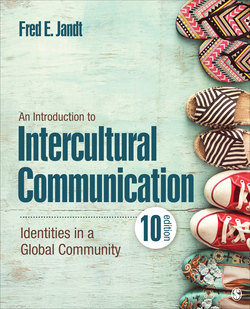Читать книгу An Introduction to Intercultural Communication - Fred E. Jandt - Страница 120
На сайте Литреса книга снята с продажи.
High Versus Low Context
ОглавлениеYou read in the previous section about the many ways context affects what we perceive. In this section, you’ll consider how context affects us in many more essential ways including how we communicate and how we think about ourselves and others.
The formal study of intercultural communication in the United States originated in 1946, when Congress passed the Foreign Service Act, which established the Foreign Service Institute to provide language and anthropological cultural training for foreign diplomats. Outside the Foreign Service Institute, the study of intercultural communication is generally associated with the publication of Edward T. Hall’s book The Silent Language in 1959. While associated with the Foreign Service Institute, Hall applied abstract anthropological concepts to the practical world of foreign service and extended the anthropological view of culture to include communication (Leeds-Hurwitz, 1990). In his 1976 book, Hall focused attention on the communication of high-context and low-context cultures. Recall that context was defined in Chapter 1 as the environment in which the communication process takes place and that helps define the communication. Cultures in which little of the meaning is determined by the context because the message is encoded in the explicit code are labeled Low context. Cultures in which less has to be said or written because more of the meaning is in the physical environment or already shared by people are labeled High context. Table 3.1 shows examples of both types.
Table 3.1
Think of the difference this way: Upon meeting a stranger, your verbal communication with that person is highly explicit—or low context—simply because you have no shared experiences. You cannot assume anything. However, when you communicate with your sister or brother with whom you have shared a lifetime, your verbal communication is less explicit because you make use of your shared context. For example, the mention of a certain name can lead to laughter. With the stranger, you would have to explain in language the story that that name represented. Also, with your sister or brother, a certain facial expression can have a shared meaning, such as “There Mom goes again,” but the stranger would have no idea what your facial expression communicated. Again, you would have to explain in words that your mother’s specific behavior was characteristic, somewhat irritating, but so uniquely her.
In low-context cultures, verbal messages are elaborate and highly specific, and they tend to be highly detailed and redundant as well. Verbal abilities are highly valued. Logic and reasoning are expressed in verbal messages. In high-context cultures, most of the information is either in the physical context or internalized in the person. Very little is in the coded, explicit, transmitted part of the message. High-context cultures decrease the perception of self as separate from the group. High-context cultures are more sensitive to nonverbal messages; hence, they are more likely to provide a context and setting and let the point evolve.
It has been said that language separates people. When understood from the perspective of high and low context, that statement makes sense. In high-context cultures, people are brought closer by the importance of their shared context. Those meanings are often lost in low-context cultures. I have often shown films of the traditional Japanese tea ceremony to classes in the United States. The tea ceremony reflects the Zen and Taoist traditions celebrating the beauty in the mundane, the superiority of spirit over matter, and tranquility with busy lives. The ceremony unites the host and guest in a concert of harmony. Though not as commonly practiced as in the past, the tea ceremony is an excellent example of a high-context experience. Nothing is spoken; all the meanings are in the context of shared experience, the teahouse, the flower arrangement, the calligraphy scroll, and the ceramics. A typical response from a low-context observer is “Hurry up and drink the tea!” In contrast, your social experiences over coffee take little meaning from the context; rather, it is the conversation—the words shared—that give meaning to the experience.
In some recent studies, European-Americans and Japanese were shown scenes, each with a background scene and foreground objects (Miyamoto, Nisbett, & Masuda, 2006). These experiments compared perceptions of changes in the foreground with perceptions of changes in the background. European-Americans were significantly better at detecting changes in the foreground, while the Japanese were significantly better at detecting changes in the background. These studies have argued that Europeans (low context) focus attention on objects independent of context (i.e., perceive analytically), whereas East Asians focus on the context (i.e., perceive holistically).
The Japanese tea ceremony, or chanoyu, is a revered tradition derived from Zen Buddhism and is approached with great respect and concentration. Adherence to time-honored rules is essential, both during the ceremony itself and in the construction of the teahouse, or cha-shitsu, which should appear rustic, simple, and tranquil.
iStockphoto.com/oluolu3
The concept of high and low context also applies to self-understanding. In low-context cultures, one speaks of a person as having attributes independent of circumstances or of personal relations. This self is a free agent who can move from group to group, from setting to setting, without significant changes. But in high-context cultures, the person is connected, fluid, and conditional. Participation in relationships makes it possible to act; completely independent behavior usually isn’t possible or even desirable (Nisbett, 2003).
